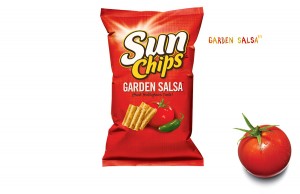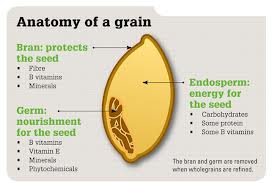One of the questions I receive all the time is "How do I know when I'm eating something healthy? The food labels are so confusing!" Here's the bottom line: the only way to can be 100% sure of what's in the food you're eating is if you have your own farm with a big wheat field, you grow your fruits and veggies, and you know exactly what your cows, chickens, and pigs have been eating. However, most of us don't and can't live this way...so we have to do the best we can. That means becoming educated (without becoming obsessed) about what's in the food you're eating.
If you want to know which of your foods could be fooling you, check out my short video with a few common examples.
[youtube]http://youtu.be/IdGf2ub_WXI[/youtube]
We've all been fooled or confused by our food at one time or another. I know I have...even though I try to educate others about the importance of reading food labels, there have been times when I've been so hypnotized by the front packaging that I jumped right into the bag, head first. A great example is when I had a late afternoon snack attack one day last summer and went to the vending machine at work to look for something good AND healthy to eat to satisfy my craving and relieve some stress. I spotted a bag of Sun Chips. The bright red bag with a picture of a tomato and jalapeno (those are healthy, right?) caught my eye...once I saw the words 'sun', 'multigrain', and 'garden', the deal was sealed and I put my money in the machine. After just a few bites, I was surprised by the semi-sweet taste...should sugar be in a bag of chips??? Probably not, but once I flipped the bag over and read the ingredients list, I was shocked to see that sugar was the 6th ingredient!
What I should have done is turn over the bag and read the back FIRST...not the calories, fat, or carbohydrate grams, but the INGREDIENT list. But food manufacturers know that certain words and colors on the FRONT of a package will influence you to buy their products. They also know that many Americans are trying to eat healthier, so words like "organic", "natural", and "healthy" have been added to the front packaging along with healthy-looking colors like red, green, and yellow.
Here's what those words on the front of the package REALLY mean
Organic: The Big O captures a lot of attention, which is why food makers display it prominently on the label. It describes foods that are grown or produced differently that conventionally-produced foods. For example, organic meat, poultry, eggs, and dairy products come from animals that are not given antibiotics or growth hormones. Many people think it's synonymous with healthy or safer, but not necessarily. Actually, the USDA (US Department of Agriculture) "makes no claims that organically produced food is safer or more nutritious than conventionally produced food".
So if you buy something that says "100 percent organic” it can contain only organically produced ingredients and processing aids; however, if it's just "organic" must consist of at least 95 percent organically produced ingredients.
***Here's another little tasty tidbit that I discovered in my research: The FDA says "Organic food is produced without using most conventional pesticides; fertilizers made with synthetic ingredients or sewage sludge"...wait, does that say "sewage sludge"? Hmmmmm, so does that mean that there are some foods that ARE made with fertilizers containing sewage sludge??? That's just nasty.
I guess the good news is that products made with less than 70% organic products can't display the word organic anywhere on the main packaging...thank God for standards.
Whole grains: the FDA definition of "whole grain is "cereal grains that consist of the intact, ground, cracked, or flaked kernel, which includes the bran, the germ, and the inner most part of the kernel (the endosperm)". Examples of whole grains are wheat, barley, oats, and rye.
Natural: has a very broad definition and is essentially meaningless. According to the FDA website, "FDA has not developed a definition for use of the term natural or its derivatives. However, the agency has not objected to the use of the term if the food does not contain added color, artificial flavors, or synthetic substances". Some part of the product was naturally grown or produced from real food. However, many natural foods are processed. So the product may have started out natural, then subsequently processed into a Frankenfood.
Sugar-free: this is just code for "contains artificial sugars". According to FDA standards, the food must contain less than 0.5 g of sugars per serving. In addition, these foods may not contain any ingredient that is a sugar or that is generally understood by consumers to contain sugars. Sugar is almost every packaged food, so it helps to be able to recognize it on the spot. Other names for sugar include malt, maple, corn or high fructose corn syrup, brown sugar, fructose sweetener, honey, molasses and crystal dextrose.
These are just some of the confusing words that are used on food labels, but these are the big ones. What other words have confused you or made you believe something was healthy when it really wasn't? I'd love to hear what you think in the comments section below.
Stay fit!
[signature]Melissa[/signature]


